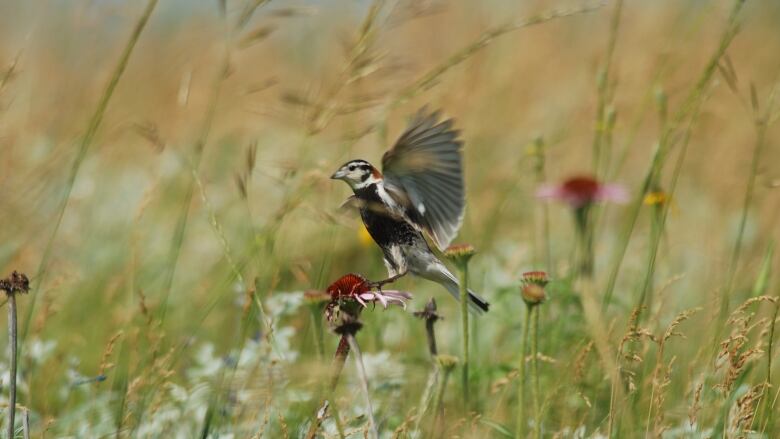Just like teenagers, young birds are slow to leave the nest and often sleep in: study
Scientists set up cameras to record exact moment fledgling birds left the nest

Boomerang teenagers and fledgling birds have more in common that you might think, according to a recentstudy that looked at when and why the babies leave their nests.
Rather than leaving early in the morning to avoid predators, some of the nestlings will often stay in the nest long after their siblings start to leave, taking advantage of the reduced competition for food from their parents. They will also return to the nest several times before leaving for good.
University of Manitoba researcher Nicola Koper says she empathized with those feathered parents while reviewing thousands of hours of videos of bird nests in Alberta and across the American Midwest.
"I have a 16-year-old, and she likes sleeping in, and the nestlings like sleeping in," Koper said. "She likes me feeding her and the nestlings like the parents feeding them. It just really resonated to me as being a lot like watching my daughter being in bed all day."
Koper and her colleagues set up miniature cameras at 200 sites in Alberta, North Dakota, Minnesota and Wisconsin.
Recording 24 hours a day, with infrared video at night, the scientists sought to get a clearer picture of the decision-making process of young grassland birds at this critical stage in their life, something they know little about because rarely is someone watching the nest at the moment the birds decide to leave, or fledge.
They discovered the decision is more complex than they originally thought. At 10 days old, the birds will often stay in the nest up to six hours past sunrise before fledging.
"What they seem to be doing is trying to maximize the amount of time they can hang around in the nest and be fed by mom," Koper said.
Once they leave, the birds will often return for a while
"It really looks like they're just trying to explore their surroundings, but it's really scary and so they're just going back to this nice, comfortable place, cuddling up with their brothers and sisters, but then they need to leave again."
The researchers looked at a variety of species, including chestnut collared longspur, savannah sparrow and bobolink, which are at risk in some places.
With files from Bryce Hoye












_(720p).jpg)


 OFFICIAL HD MUSIC VIDEO.jpg)
.jpg)



























































































